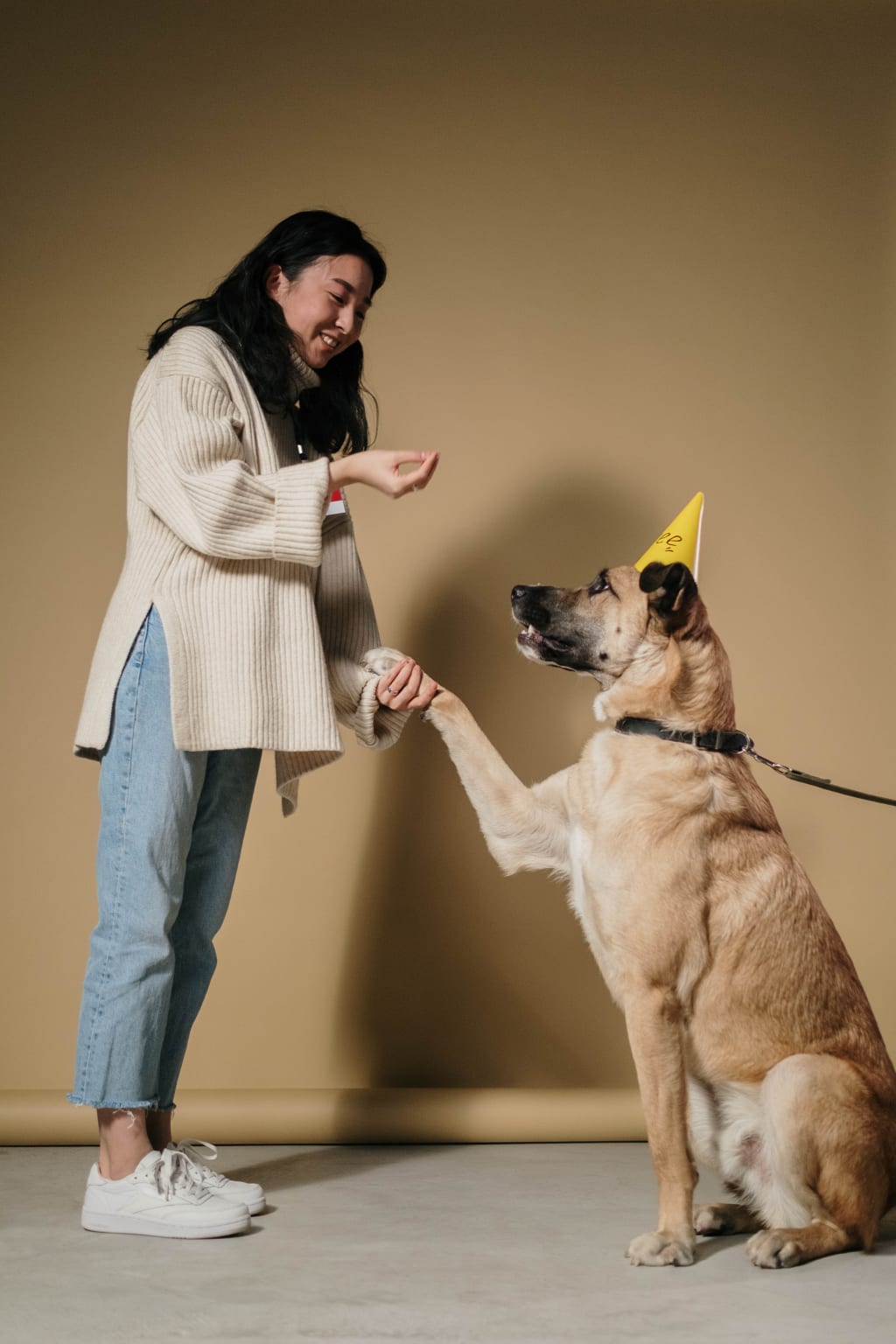"The Art of Pet Training: Tips, Tricks, and Techniques for a Happy and Well-Behaved Pet"
For Beginners

I. Introduction
he importance of pet training
Pet training is an important aspect of responsible pet ownership. It helps to establish boundaries and expectations for your pet, and can also improve their overall behavior and obedience. A well-behaved pet is more likely to be welcomed in social settings and public places, and is generally easier to live with on a day-to-day basis.training,
T
he benefits of a well-behaved pet
In addition to the practical benefits, pet training can also strengthen the bond between you and your furry friend. It allows for shared learning and growth, and can be a fun and enjoyable activity for both you and your pet.
Overall, pet training is an important investment in the well-being and happiness of both you and your pet. By taking the time to properly train your pet, you can ensure a harmonious and positive relationship for years to come.
II. The basics of pet training
Use positive reinforcement
The basics of pet training involve using positive reinforcement techniques to encourage desired behaviors in your pet. Positive reinforcement means rewarding your pet with treats, praise, or other rewards when they display the desired behavior. This helps to reinforce the behavior and increase the likelihood that your pet will repeat it in the future.
Be consistent in commands and rewards
It is important to be consistent in your commands and rewards when training your pet. This helps them understand what is expected of them and makes it easier for them to learn. Use the same words and gestures for each command, and be consistent in the rewards you offer for good behavior.
Avoid punishment and negative reinforcement
Avoid using punishment or negative reinforcement as a means of training your pet. This can lead to fear and mistrust, and can damage the bond between you and your furry friend. Instead, focus on using positive reinforcement techniques to encourage desired behaviors.
By following these basic principles of pet training, you can effectively teach your pet new behaviors and tricks. With patience and consistency, you and your pet can build a strong bond and enjoy a happy and harmonious relationship.
III. Advanced techniques for pet training
Utilize a clicker
One advanced technique that can be helpful in pet training is the use of a clicker. A clicker is a small device that makes a distinct clicking sound when pressed. You can use the clicker to mark the exact moment your pet performs the desired behavior, and then immediately reward them. This helps them understand exactly what they are being rewarded for, and can speed up the learning process.
Break training down into small steps
Another advanced technique is to break training down into small, manageable steps. This makes it easier for your pet to understand and learn new behaviors. Start with basic commands like "sit" and "stay," and then gradually move on to more complex tricks. Breaking training down into small steps also allows you to focus on one behavior at a time, making it easier to track your pet's progress.
Mix up the training routine to keep your pet engaged
It is also important to mix up your training routine to keep your pet engaged and motivated. Try introducing new tricks and behaviors, or incorporate different rewards and training methods to keep things interesting for your pet. By mixing up the training routine, you can keep your pet motivated and engaged, and help them continue to learn and grow.
By utilizing these advanced techniques, you can further enhance your pet's training and behavior, and continue to strengthen the bond between you and your furry friend.
IV. The importance of patience in pet training
Training takes time and effortffort
Pet training takes time and effort, and it is important to be patient with your furry friend as they learn and grow. Training can be a challenging process, and it is normal for your pet to make mistakes along the way.
It is normal for your pet to make mistakes
It is important to be patient and supportive during the training process, and to recognize that your pet is still learning. Be understanding when they make mistakes, and offer praise and rewards for their successes. By being patient and supportive, you can help your pet feel more confident and motivated to continue learning.
Be patient and supportive to help your pet succeed
Training takes time and effort, and it is important to be consistent in your approach. With patience, consistency, and positive reinforcement techniques, you and your pet can succeed in your training journey. By being patient and supportive, you can help your pet become a happy and well-behaved companion.
V. Conclusion
The art of pet training requires patience, consistency, and the use of positive reinforcement techniques
By following these tips and tricks, you and your pet can develop a strong bond and enjoy a happy and harmonious relationship.
Pet training is an important aspect of responsible pet ownership, and it takes patience, consistency, and the use of positive reinforcement techniques to effectively teach your pet new behaviors and tricks. By following these tips and tricks, you can strengthen the bond between you and your furry friend and create a happy and harmonious relationship.
To succeed in the art of pet training, it is important to use positive reinforcement techniques to encourage desired behaviors in your pet. This means rewarding your pet with treats, praise, or other rewards when they display the desired behavior. It is also important to be consistent in your commands and rewards, and to avoid using punishment or negative reinforcement.
Advanced techniques like using a clicker and breaking training down into small steps can also be helpful in the pet training process. It is also important to mix up your training routine to keep your pet engaged and motivated.
Finally, it is important to be patient with your pet during the training process. Training takes time and effort, and it is normal for your pet to make mistakes along the way. By being patient and supportive, you can help your pet feel more confident and motivated to continue learning.
By following these tips and tricks, you and your pet can master the art of training and enjoy a happy and harmonious relationship.
About the Creator
Enjoyed the story? Support the Creator.
Subscribe for free to receive all their stories in your feed. You could also pledge your support or give them a one-off tip, letting them know you appreciate their work.





Comments
There are no comments for this story
Be the first to respond and start the conversation.